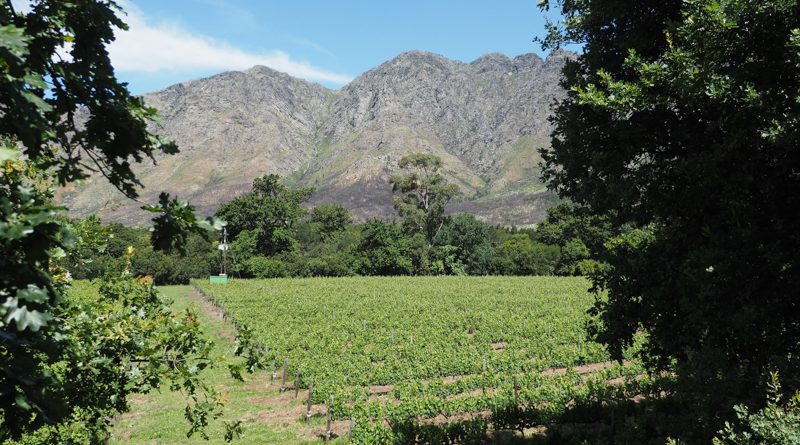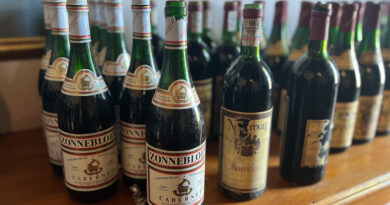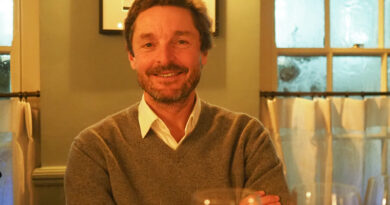In South Africa: Boekenhoutskloof
Goode and Ring continue their Franschhoek journey by visiting Boekenhoutskloof, one of the country’s top wineries.
Boekenhoutskloof is one of South Africa’s most important wineries. Established in 1993 by Marc Kent and six other partners (including the late Tim Rands of Vinimark), it is located in Franschhoek. But early on it adopted the model of sourcing grapes from top vineyards around the Western Cape. We visited with winemaker Gottfried Mocke, who joined Boekenhoutskloof after building his reputation as cellar master at Chamonix, also in Franschhoek.
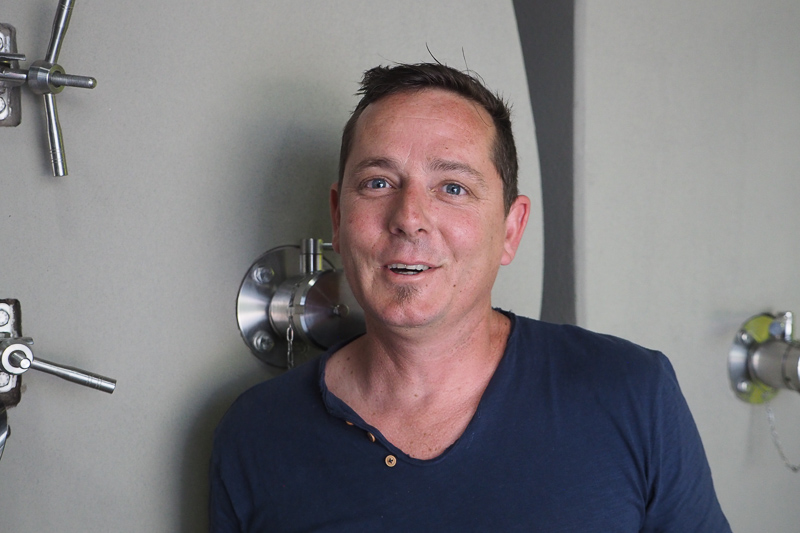
In the beginning the range consisted of Sémillon, sourced from Franschhoek; a Syrah; and a Cabernet Sauvignon. But Kent was smart and realized that just selling high-end wines isn’t the best way to pay all the bills. He introduced some more commercial wines: the Porcupine Ridge Red and White, the more ambitious Chocolate Block, and then another value proposition, The Wolftrap. These have been a great success worldwide, and helped build the business.
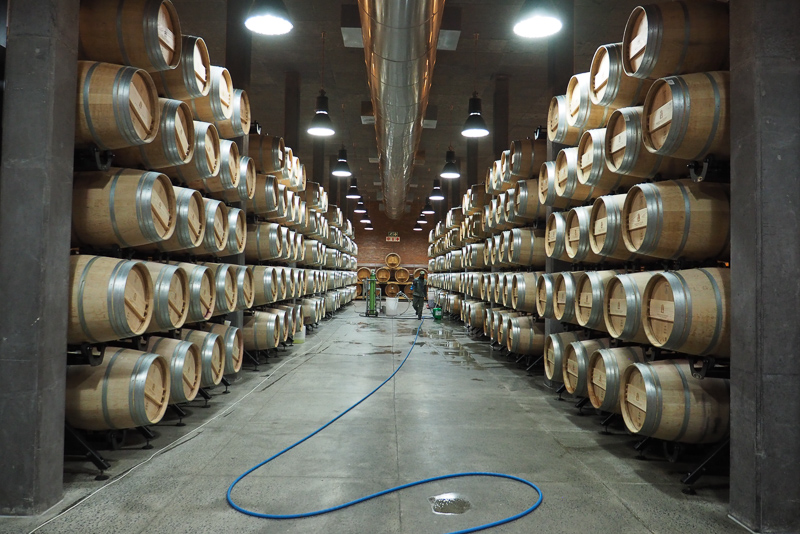
A major development was the push into the Swartland with Porseleinberg, purchased in 2009. Marc hired Callie Loeuw to head up this project. This has now been going a decade, and as well as producing a single-vineyard high-end Syrah from older vines, the vineyard has been expanded, making up the source of Boekenhoutskloof Syrah. They have approximately 100 hectares planted, and 50 more planted on a new site that’s not yet in production, growing predominantly Syrah with a bit of Grenache and some Cinsualt. Callie Louew farms all of this this, and from the old original vineyard he makes Porseleinberg. The plantings around that go to the Boekenhoutskloof Syrah, as well as the lower vineyards, end up in the Chocolate Block.
A new project has been a push into Hemel-en-Aarde, the exciting cool climate region near Hermanus. ‘We bought a small piece of land in the Hemel-en-Arde valley, next to Newton Johnson and across the road from Sumaridge,’ explains Gottfried Mocke. At the moment they are busy developing it. They have planted 8 acres of Chardonnay and next will plant Pinot Noir.
I asked Gottfried about Chardonnay. ‘I think it is one of the white varieties in South Africa,’ he replied. ‘A lot of my colleagues are making great examples. It seems to be a white variety that shows real potential for ageing. We are getting some great aged Chardonnays in this country. Some of them actually age better than a lot of the reds that we make.’
And Sémillon? ‘It has always been important for Boekenhoutskloof. I never made Sémillon at Chamonix, I used it as part of a blend. I was lucky that we were already working with old vineyards.’

We walk down into the impressive new cellar. First stop is the egg room. About a third of the Sémillon goes into concrete egg, and they also do a bit of Chenin and Chardonnay here. They have recently started working with amphora that they import from Italy.
Gottfried has been making some amphora wine from a 1902-planted vineyard of Muscat of Alexandria. ‘When I first picked it, we blended it with Sémillon, of which it made about 2% of the blend,’ he says. ‘Then this year I wanted to do something more interesting with this block.’ He did whole berry ferments in the amphora, pressed it off and put it back into the vessels. ‘It’s fantastic,’ he says.
Some of the eggs have a cooling facility. ‘It’s nice to mix it up a bit,’ he says.
Then we moved into the main part of the cellar, renovated in 2017. The new cellar, which is really impressive, took just a year to build. About 60% is underground, to hide it a bit, because it’s really big. ‘We did a lot of the work ourselves,’ says Gottfried. ‘We didn’t have an architect to design it: it was all Mark’s ideas. We got a lot of different people in. Why get a site engineer when you can get one for free?’ he jokes. The current average is 300 tons through this cellar each vintage, but next year it will take 500 tons.
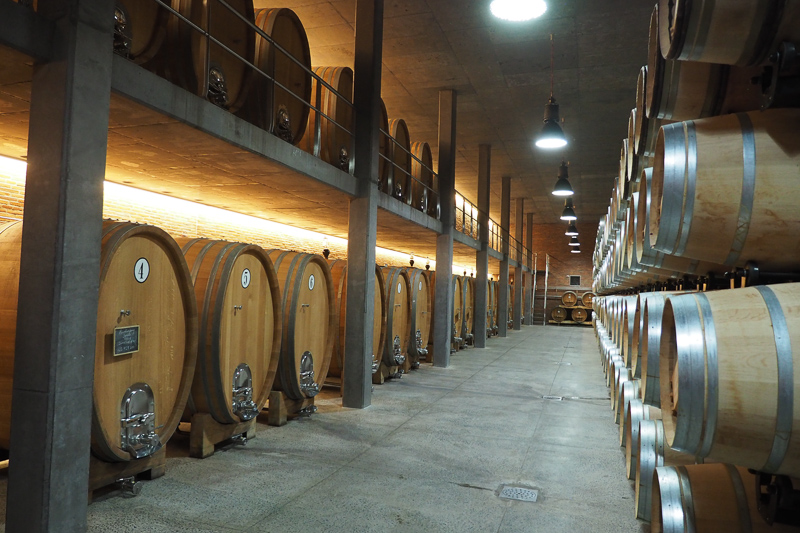
The large wood is all from Stockinger; they will have 94 of these foudres when the cellar is full. There are 600 litre barrels and demi-muids for Syrah, and then regular barrels for the Bordeaux varieties. These are on the Oxy-2 system, where the barrels are supported on wheels so they can be turned by hand to suspend the lees. It’s a neat system which doesn’t take any extra space. Mark brought the first Oxy line system into South Africa when they were doing a lot of barrel fermentation for reds.
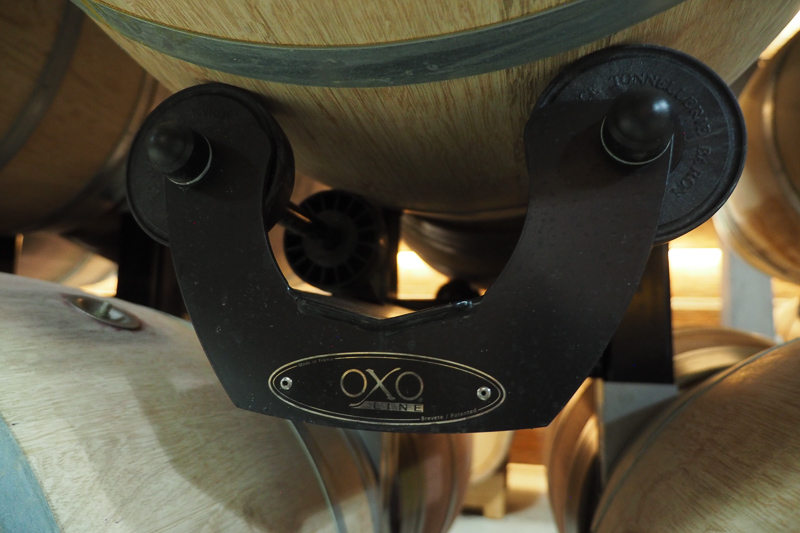
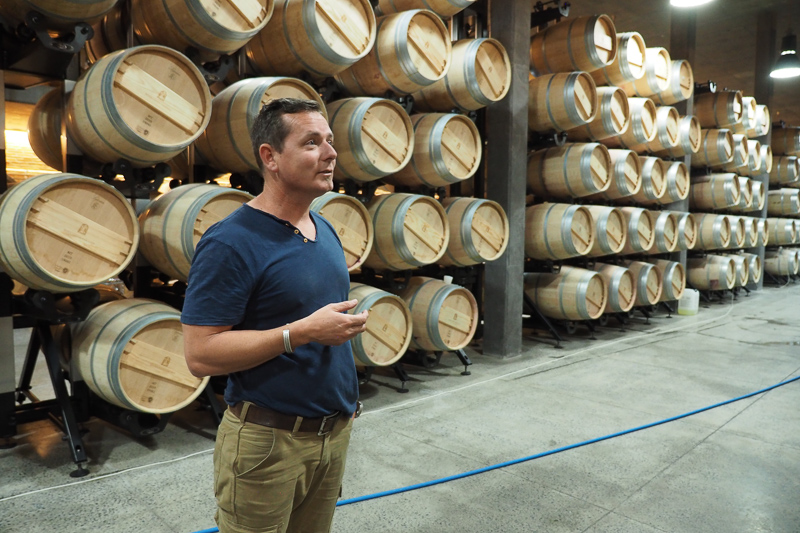
They purchased a Pellenc destemmer after the 2016 vintage when there were a lot of raisined berries that they didn’t want in the ferments. Often, when it’s a hot, dry vintage, the sun-facing side of the bunch is a bit shrivelled. ‘It is great to work with as long as you have someone who knows how to clean the machine,’ he says. ‘It is a very good destemming unit, giving us perfect berries.’
‘All these machines come from Bordeaux and they are fantastic,’ says Gottfried, ‘as long as the grapes are cold. No machine works on warm grapes. So we pick into refrigeration trucks and then we pop them into containers, and we only process them the next day.’
THE WINES
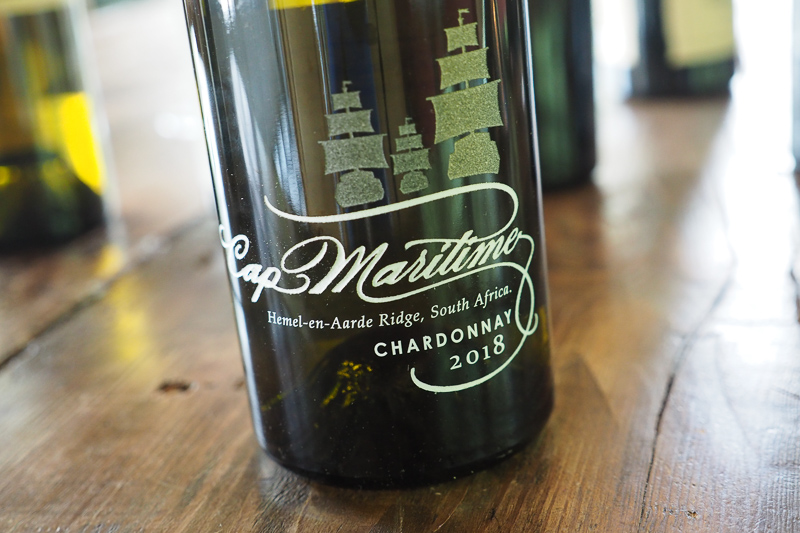
Cap Maritime Chardonnay 2018 Hemel-en-Aarde Ridge, South Africa
2017 was the first vintage. 13.5% alcohol.Whole bunch pressing and a bit of settling before wild ferment in 70% oak and 30% concrete eggs (no malolactic for this portion). Taut, linear and bright with keen acidity and some structure. This has great precision and focus with purity and a mineral streak. Lovely mealy hints with a lemony core. So juicy and primary with great precision, and a latent richness that will emerge with time. 95/100 (R425) (JG)
Lovely creamy lemon, pear, green apple, mandarin, white peach is tight with tension, with the grip on the sides hugging a gently plump core of fruit. Whole bunch pressed, this was native fermented in oak (70%) and concrete eggs. The oak portion goes through MLF, but it’s halted in the eggs (via a touch of sulphur). Great texture and structure, and illustrates why H-e-A is such a fantastic future for RSA Chardonnay. 92/100 (TR)
Cap Maritime Pinot Noir 2018 Hemel-en-Aarde Valley, South Africa
40% whole bunch in concrete, wild ferment. Lovely sappy nose with nice green hints. Perfumed and enticing with red cherries. So floral. Sappy, vital and detailed with lovely pure raspberry and redcurrant fruit, good acidity, and very fine green hints. Good structure here under the bright, pure fruit. Such a lovely detail to this wine. Thrilling stuff. 96/100 (JG)
This fresh and bright pinot noir was native fermented whole bunch in a mix of 40% concrete and wood including barriques (50% new), and 600L older Stockinger. Lovely cherry, wild red currant, dried herbs (thyme, rosemary), dusky plum and musk perfume is scented with light smoke that runs the long and elegant palate. Tight, fine, lightly sticky tannins wrap the whole. Very promising. 92/100 (TR)
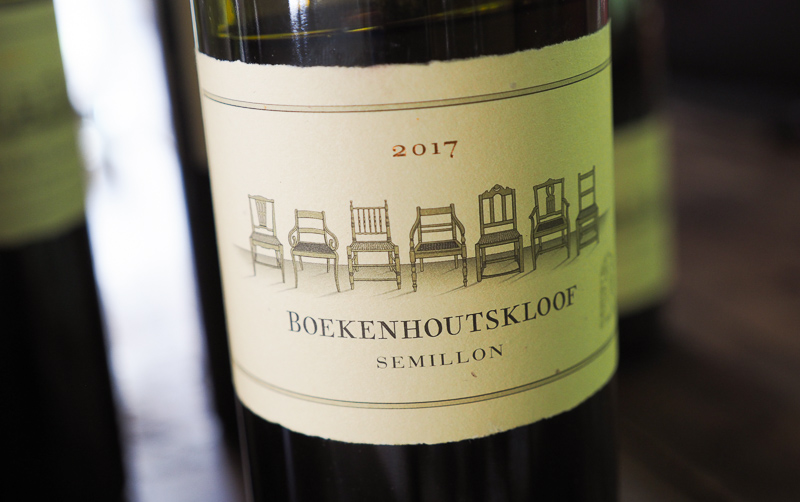
Boekenhoutkloof Semillon 2017 Franschhoek, South Africa
12 000 bottles. One vineyard is from Eikhof, from Francois Malherb, planted in 1902 on rootstock. Then across the road, on the La Motte side, there’s a sandy vineyard planted in 1942. And since Gottfried came they have a lot of the La Colline vineyard, too, planted in 1936. From 2016 they have used 2-3% of Muscat of Alexandria from 1902. With a lot of these old vineyards there is often some Muscat standing in between the Semillon. It seems to be those vineyards that have good crops. Whole bunch pressing oxidatively, settle naturally then racked to barrels and eggs (one third). Wild fermentation. Wine in barrel spends 14 months on mother lees without any intervention. Fine, mineral, nutty and structured with amazing texture. Has hints of lanolin and wax with a citrus undercurrent and some pear skin, too. Brooding and complex with lovely intensity and a fine, finely spiced texture. Lovely stuff. 95/100 (R350) (JG)
Eikoff (1902 planted) is joined by a neighbouring sandy-soiled vineyard planted 1942, and legendary La Colline 1936. From 2015 they started adding 2% Muscat of Alexandria as well. This was whole bunch pressed, with no skin contact, 1/3 in concrete, 2/3 French barriques, and then blended (80 oak and 20 concrete final blend). It spent 14 months on full lees, without opening the barrel, resulting in an alluring, creamy texture, and great length. Dried yellow fruits, chamomile, some green herbal leaves, fine salts, and tea notes on the long finish. Young still, with heaps of time to go. 93/100 (TR)
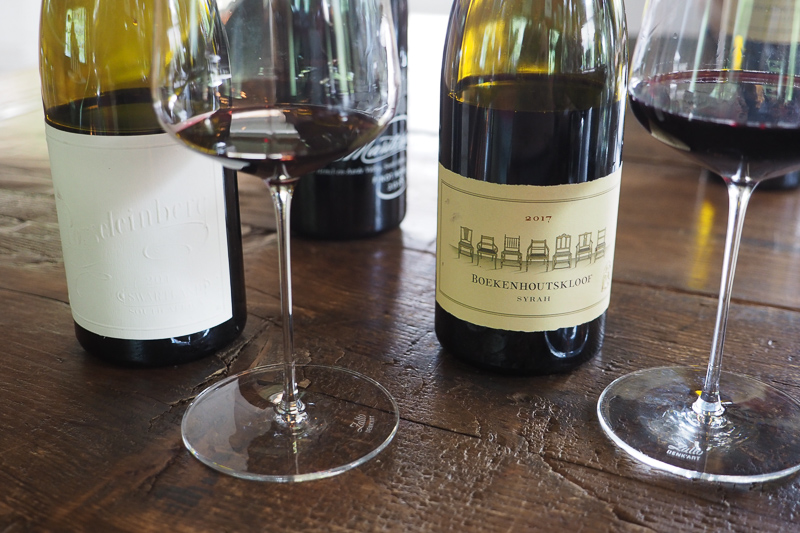
Porseleinberg Syrah 2017 Swartland, South Africa
The old vineyard. Complex, brooding and fresh with savoury blood, iodine and spice as well as black cherries and plums. Has some olive too, and a core of focused black fruit. Nicely structured but at the same time showing elegance and finesse. Has a sweet core to the meaty fruit. So layered and beguiling. Thrilling wine. 95/100 (R600) (JG)
Callie’s old vineyard, a very windy site on blue schist and mica schist, at 350m. This was whole bunch native fermented in concrete, before 1 year elevage in foudre and concrete eggs. Tight, dark, and perfumed with plum, wild cassis, peppery spiced with a lingering stony dust, this is grippy, firm and structural, unrevealing in youth, but with great allure for the future. 94/100 (TR)
Boekenhoutskloof Syrah 2017 Swartland, South Africa
80% is from Porseleinberg (mica schist/blue schist), and 20% from an older vineyard (Goldmine, brown schist, softer soil) next to Mullineux’ Roundstone property. 40% whole bunch, then 100% in foudre for 18 months. This has a lovely aroma with some sweet, sappy green notes and bright pepper as well as red fruits. Juicy and supple on the palate with some grip and pepper under the fruit. Has a sweet red fruit core and nice texture. Lovely Burgundian expression of Syrah. 94/100 (R450) (JG)
This was sourced 80% from the top of the mountain (Porseleinberg’s mica and blue schists), and 20% from 10 year old organic certified vines on Goldmine brown schist (neighbouring the Mullineux’ Roundstone Vineyard). Super herbal, green, peppery and primary, with bright plum, violets, sapid notes surrounding a juicy core. 40% whole bunch, all in foudre for 18 months. 92/100 (TR)
Boekenhoutskloof Cabernet Sauvignon 2017 Stellenbosch, South Africa
60% new oak. Whole berry ferments in Nico Velo concrete tanks. Brooding blackcurrant fruit nose. Has a complex savouriness: quite brooding. The palate shows good concentration with firm structure. This is really serious: there’s a sweetness and ripeness to the fruit, but also some depth and structure, finishing gravelly with some cedary undertones. Lots of potential here. 94/100 (R450) (JG)
From the Faure side of Stelly, this was tipped with 6% Cabernet Franc, and was picked much earlier, and sees a little less new oak vs. their Franschhoek Cab Sauv. Destemmed into concrete, and fermented with a yeast strain from Reyneke, this rested in 60% new barriques for 18 months.. Anise driven, with great wild blackberry, tight and peppery herbs, pine, mint and sticky, ample tannins, thankfully mitigated by a burst of freshness on the palate and finish. 92/100 (TR)
Boekenhoutskloof Cabernet Sauvignon 2017 Franschhoek, South Africa
10% Cabernet Franc in the blend, with some oxo line ferments in new barrels on wheels, pushing the berries through the bung hole. At the end of the ferment they empty the barrel into the press, taking the head off the barrel. 80% new oak. Supple and juicy with nice precision to the red and black fruits. Nervy and expressive. Floral with nice brightness and some red characters driving things, not just blackcurrant. An elegant expression of Cabernet. 93/100 (R450)
Very similar to the Stellenbosch Cabernet Sauvignon, but with 13% Cabernet Franc, and a little more new oak here (80%). This was partially fermented utilizing the rotating Oxo system. Very primary and direct, with plum, wild blackberry, and a generous cushion of purpose and black fruit, seasoned with ample peppery spice. Well struck balance between tension and generous fruit, ready for drinking now. 91/100 (TR)
The Journeyman 2015 Franschhoek, South Africa
Estate wine. Predominantly old Cabernet Franc (4.5 barrels) and half a barrel of Merlot, made in the oxoline system. Brooding gravelly nose with nice intensity and sweet blackcurrant and tar notes. The palate is structured with nice tannic grip to it. So gravelly and dense with amazing structure and presence. 95/100 (never sold a bottle, so it has no price) (JG)
All estate blend, with 4.5 barrels old vine Cabernet Franc, and half a barrel of Merlot, entirely on the Oxo system. Ripe, rich, and porty nose, with dark cassis, wild blackberry, thorns, and hints of pitch. Tannins are raging and sticky at this youthful state, subsiding slightly for a leathery, salty finish. Quite masculine and brooding, with structure that matches the ripeness. 92/100 (TR)
Find these wines with wine-searcher.com

